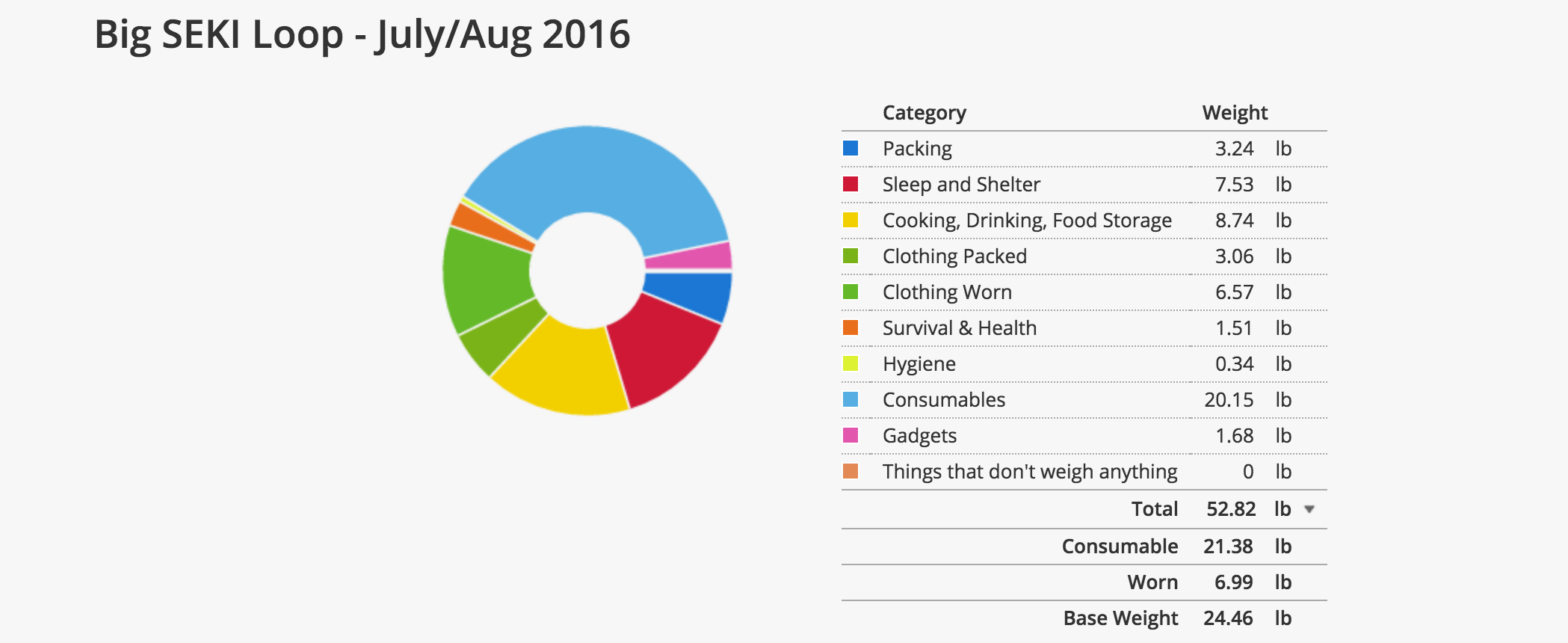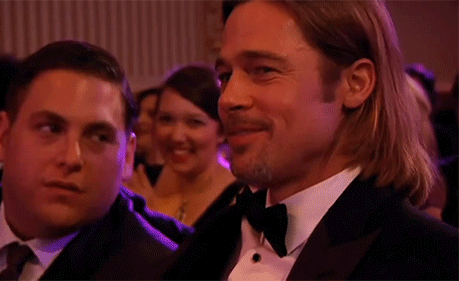My last post now stands as the “before” version of my overly ambitious goal and this next series of posts will give the “after” details of what I learned from attempting such an intensively long and difficult backpacking itinerary and ultimately, changing the goal.
First of all. Let’s talk about itinerary planning. My experiences until last week included 8 years of regular day hiking distances that ranged from 5-8 miles, and rarely had elevation gain/losses of more than 1000′ total in a trip. I also did urban walking that might cumulatively have added up to 10 miles if I had gone for a run that day, and then one overnight backpacking trip to Sykes Hot Springs that required a 10 mile hike with moderate elevation to reach. In planning this Big SeKi Loop itinerary, I put way too much stock in the author’s assurance that it could be done in 7-10 days – hey, I gave myself 11 days! – I thought that was all it took. Plus, we hike at about 2 miles an hour so 15 miles in a day means an 8 hour day, right?
WRONG.
One of the first things I learned on Day 1 is that when I am hiking into high elevations (10500′), going uphill for hours, factoring in my heavy body plus fullest pack, I’m lucky if I’m moving at a rate of 1 mile per hour. That makes for really long days if you’re trying to target 10 or more miles in a day and you have to stop to eat/rest/fill & treat water.

Day 0
I get to the Road’s End ranger station at around 1:30pm to pick up my permit and I answer all the ranger’s questions about bear protection (I’ve got 2 bear vaults), the colour of my tent & pack, and where I’ll be each night. We talk about bears and he tells me a couple of interesting things:
- An anecdote about why grizzlies are fighter/attackers while brown bears aren’t (typically). Grizzlies live mostly in plains & flat land areas with no trees and so can’t climb up trees to get away so they have to stand and fight where brown bears are forest bears and have lots more options so they are more likely to run away and/or hide.
- “Think of these bears like bigger versions of raccoons”. To this I say “is that a good thing? I’ve known some very badass raccoons.” So he corrects it to “shy, country raccoons”.
I just want to mention that at no point in my itinerary sharing with this experienced ranger, was the ambitiousness of my route called into question. So at this point, I’m still thinking that what I’m planning falls within the range of ‘normal’.
Permit in hand, I head over to Stony Creek where I have a room booked for the night and also where I’m hoping to get what is turning out to be a very late lunch. Their kitchen is closed until 4pm and I arrive at 3:30 so lunch gets even later. The staff are still cleaning and preparing for the next round of check ins and fortunately my room is already clean so I’m able to get in early and dump my stuff. At 4pm I go downstairs and order the meatloaf special which is the first meatloaf I’ve ever had that was jam packed with mushrooms and sliced black olives – but I’m about to eat freeze dried dinners for almost two weeks so who’s complaining?
The lodge closes down all its services at 8pm so I go upstairs for a nap and then come back down to grab a pizza and Chelada to bring up to my room for dinner. I end up dumping the Chelada down the sink immediately after the first sip and I can barely eat any of the pizza due to a combination of having a late lunch but also I’m noticing increasing nerves. When I finally get to sleep I dream vividly that I die in a raging forest fire.

Day 1
Wake up at 5:30am realizing that I have pink eye in my right eye. I haven’t had this since I was 11 years old but I immediately recognize the feeling of a sore, swollen eye. Fortunately I have some apple cider vinegar with me and I wipe my eye with it, and dump out the last bit of tincture from a dropper bottle I had with me but wasn’t bringing along to fill with cider vinegar to bring on the trail. Pink eye is not derailing this trip that has been planned for over 6 months.
I’m at the Copper Creek trailhead at 7:30am and I get all things food-like out of my car and stowed in the parking lot’s bear bins. Then I start hiking.

It’s a grueling day, the few other people who started with me that morning pass by and I never see them again. With water, I’m carrying over 50lbs on my back which makes the total weight my legs are taking up 5400′ over 300lbs. Fortunately there are several water stops where I could soak my feet, change socks, and force myself to eat a snack. Within a couple of hours on the trail it was clear which piece of equipment I was most grateful for bringing: mosquito head net. If I had had to do all that climbing while also having flies & mosquitos landing on my face and ears the whole time, I might have turned back. The head net gave me a buffer of sanity and allowed me to stay focused on moving my feet forward.

I ran into a ranger when I was bushwhacking back to the trail from a water break mid-day and as he checked my permit he warned me that the rest of that day’s hike would have very little water, and that there would be NO water during tomorrow’s 6.6 miles down to Simpson Meadow. Also he said there were going to be some pack animals brought through and to give them room. I missed seeing them because I went back off-trail for more water but I followed pack animal droppings the rest of my time in the mountains and it was often a happy sighting as it meant I was definitely still on the right trail.

That first night, as I summited the 10000′ around 6:30pm at Granite Lake, I met my first people in hours – a retired couple from Utah – we had a short visit and then I pushed further to get closer to the lake for sleeping. While the lake was supposed to be 0.4 miles off the main trail that I had just done 10.5 miles on, it didn’t appear quickly and I was so tired that I stopped at the best looking flat rock near a small river and called that home for the night.
It was cold, buggy, and I wasn’t able to eat much dinner. I’d lost my appetite in the afternoon, hadn’t eaten my planned lunch, could barely get anything down without a lot of water to wash it in, and I ended up burying about half of my chili mac and getting into bed by 7:30pm. Then I lay around, unable to fall asleep because I was panicking about everything from the fact that not all my stuff was in bear canisters (couldn’t get my toiletries in there on Day 1), how sore and tired I was, and how the heck was I going to push further into the wilderness in this kind of terrain? I was beginning to doubt that I could do 11 days of this. All this anxiety led to a fitful first night and when I did manage to get to sleep I spent the night dreaming about fighting with my ex.
In the next post I get up and keep hiking on Day 2 and share how I ended up adjusting my itinerary which contributed to how the whole experience started to improve.






